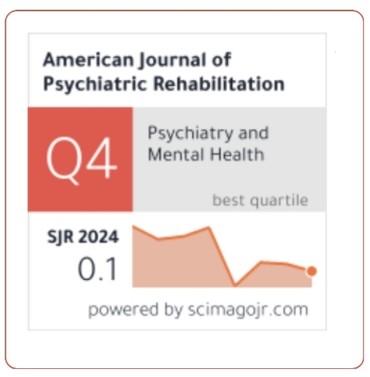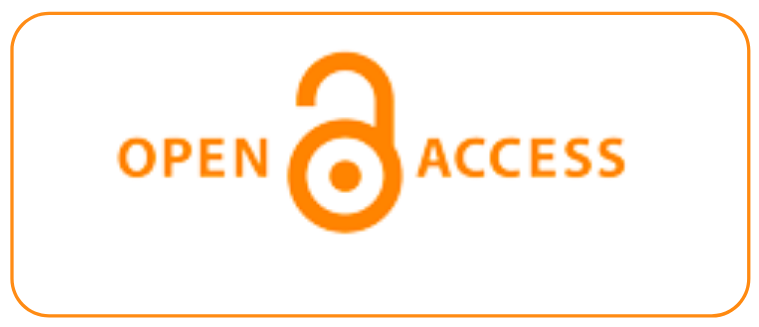Problematic Smartphone Use And Its Psychosocial Correlates: A G-Deeg–Based Paradigm Proposal
DOI:
https://doi.org/10.69980/ajpr.v28i5.705Keywords:
Adolescents; Digital therapeutics; Emotion regulation; Ecological momentary assessment (EMA); Fear of missing out (FoMO); Notification architecture; Problematic smartphone use; Smartphone addiction; Smartphone; Sleep disturbance.Abstract
Background: The deep embedding of smartphones into everyday life has intensified debates about their links with psychological well-being and social functioning. Much of the literature reports small, context-sensitive associations between technology use and mental health indices; the magnitude and direction vary by use characteristics (e.g., passive social comparison, notification intensity), timing (especially late-night use), and individual susceptibilities (e.g., FoMO, impulsivity) [1, 2, 3, 4, 5, 6, 7, 8].
Objective: We conceptualize Problematic Smartphone Use (PSU) not as a standalone diagnosis but as a risk syndrome at the intersection of loss of control, tolerance/withdrawal-like patterns, and salient functional impairment. We integrate evidence within a multilayered framework (developmental, digital-design, emotional/psychological, social/environmental, biological) [9, 10, 11].
Methods: We narratively synthesize longitudinal/panel/EMA studies, systematic reviews and meta-analyses, and selected neuroimaging evidence published between 2013 and 2024 [12, 1, 13, 14, 15, 16, 17].
Findings (synthesis): (i) Average associations are small; however, context-sensitive large effects can emerge via sleep disruption, high-intensity notification architectures, and FoMO/emotion-regulation difficulties [12, 18, 19]. (ii) Neuroimaging studies note striatal–prefrontal differences in at-risk subgroups, with limited causal inference [20, 14]. (iii) Digital therapeutics yield small-to-moderate benefits for depression/anxiety; human support and measurement transparency appear to enhance effects [17, 21, 22].
Conclusions: Moving beyond “addicted everywhere for everyone,” PSU should be approached through functional impairment and context-based clinical decisions. At school/work, phone-free windows and notification diets are advisable; in clinics, stepped-care and preferably human-supported digital interventions are recommended. Future work should prioritize causal mapping through self-report–log–EMA triads, preregistered RCTs, and longitudinal neuroimaging [1, 13, 4].
References
[1] Orben A, Przybylski AK. The association between adolescent well-being and digital technology use. Nat Hum Behav. 2019;3(2):173-182. doi:10.1038/s41562-018-0506-1
[2] Przybylski AK, Weinstein N. A large-scale test of the Goldilocks hypothesis: Quantifying the relations between digital-screen use and the mental well-being of adolescents. Psychol Sci. 2017;28(2):204-215. doi:10.1177/0956797616678438
[3] Jensen MM, George MJ, Russell MA, Odgers CL. Young adolescents’ digital technology use and mental health symptoms: Little evidence of longitudinal or daily linkages. Clin Psychol Sci. 2019;7(6):1416-1433. doi:10.1177/2167702619859336
[4] Odgers CL, Jensen MR. Annual Research Review: Adolescent mental health in the digital age: facts, fears, and future directions. J Child Psychol Psychiatry. 2020;61(3):336-348. doi:10.1111/jcpp.13190
[5] Kardefelt-Winther D, Rees G, Livingstone S. Contextualising the link between adolescents' use of digital technology and their mental health: a multi-country study of time spent online and life satisfaction. J Child Psychol Psychiatry. 2020;61(8):875-889. doi:10.1111/jcpp.13280
[6] Dienlin T, Johannes N. The impact of digital technology use on adolescent well-being. Dialogues Clin Neurosci. 2020;22(2):135-142. doi:10.31887/DCNS.2020.22.2/tdienlin
[7] Carter B, Rees P, Hale L, Bhattacharjee D, Paradkar MS. Association between portable screen-based media device access or use and sleep outcomes: a systematic review and meta-analysis. JAMA Pediatr. 2016;170(12):1202-1208. doi:10.1001/jamapediatrics.2016.2341
[8] Elhai JD, Yang H, McKay D, Asmundson GJG. COVID-19 anxiety symptoms associated with problematic smartphone use severity in Chinese adults. J Affect Disord. 2020;274:576-582. doi:10.1016/j.jad.2020.05.080
[9] Horvath J, Mundinger C, Schmitgen MM, Wolf ND, Sambataro F, Hirjak D, et al. Structural and functional correlates of smartphone addiction. Addict Behav. 2020;105:106334. doi:10.1016/j.addbeh.2020.106334
[10] He Q, Turel O, Bechara A. Brain anatomy alterations associated with Social Networking Site (SNS) addiction. Sci Rep. 2017;7:45064. doi:10.1038/srep45064
[11] Linardon J, Cuijpers P, Carlbring P, Messer M, Fuller-Tyszkiewicz M. The efficacy of app-supported smartphone interventions for mental health problems: a meta-analysis of randomized controlled trials. World Psychiatry. 2019;18(3):325-336. doi:10.1002/wps.20673
[12] Carter B, Rees P, Hale L, Bhattacharjee D, Paradkar MS. Association between portable screen-based media device access or use and sleep outcomes: a systematic review and meta-analysis. JAMA Pediatr. 2016;170(12):1202-1208. doi:10.1001/jamapediatrics.2016.2341
[13] Panova T, Lleras A. Is smartphone addiction really an addiction? J Behav Addict. 2018;7(2):252-259. doi:10.1556/2006.7.2018.49
[14] Elhai JD, Yang H, McKay D, Asmundson GJG. COVID-19 anxiety symptoms associated with problematic smartphone use severity in Chinese adults. J Affect Disord. 2020;274:576-582. doi:10.1016/j.jad.2020.05.080
[15] Billieux J, Maurage P, Lopez-Fernandez O, Kuss DJ, Griffiths MD. Can disordered mobile phone use be considered a behavioral addiction? An update on current evidence and a comprehensive model for future research. Curr Addict Rep. 2015;2(2):156-162. doi:10.1007/s40429-015-0054-y
[16] Firth J, Torous J, Nicholas J, Carney R, Pratap A, Rosenbaum S, et al. The efficacy of smartphone-based mental health interventions for depressive symptoms: a meta-analysis of randomized controlled trials. World Psychiatry. 2017;16(3):287-298. doi:10.1002/wps.20472
[17] Kwon M, Kim DJ, Cho H, Yang S. The Smartphone Addiction Scale: Development and validation of a short version for adolescents. PLoS One. 2013;8(12):e83558. doi:10.1371/journal.pone.0083558
[18] Demirci K, Akgönül M, Akpinar A. Relationship of smartphone use severity with sleep quality, depression, and anxiety in university students. J Behav Addict. 2015;4(2):85-92. doi:10.1556/2006.4.2015.010
[19] Twenge JM, Martin GN, Spitzberg BH. Trends in U.S. adolescents' media use, 1976–2016: the rise of digital media, the decline of TV, and the (near) demise of print. Psychol Pop Media Cult. 2019;8(4):329-345. doi:10.1037/ppm0000203
[20] Twenge JM, Martin GN, Campbell WK. Decreases in psychological well-being among American adolescents after 2012 and links to screen time during the rise of smartphone technology. Emotion. 2018;18(6):765-780. doi:10.1037/emo0000403
[21] Twenge JM, Joiner TE, Rogers ML, Martin GN. Increases in depressive symptoms, suicide-related outcomes, and suicide rates among U.S. adolescents after 2010 and links to increased new media screen time. Clin Psychol Sci. 2018;6(1):3-17. doi:10.1177/2167702617723376
[22] Twenge JM, Campbell WK. Associations between screen time and lower psychological well-being among children and adolescents: Evidence from a population-based study. Prev Med Rep. 2018;12:271-283. doi:10.1016/j.pmedr.2018.10.003
[23] Demirci K, Akgönül M, Akpinar A. Relationship of smartphone use severity with sleep quality, depression, and anxiety in university students. J Behav Addict. 2015;4(2):85-92. doi:10.1556/2006.4.2015.010
[24] Parry DA, Davidson BI, Sewall CJR, Fisher JT, Mieczkowski H, Quintana DS. A systematic review and meta-analysis of discrepancies between logged and self-reported digital media use. Nat Hum Behav. 2021;5(11):1535-1547. doi:10.1038/s41562-021-01117-5
[25] Ellis DA, Davidson BI, Shaw H, Geyer K. Do smartphone usage scales predict behavior? Int J Hum Comput Stud. 2019;130:86-92. doi:10.1016/j.ijhcs.2019.05.004
[26] Orben A, Przybylski AK. The association between adolescent well-being and digital technology use. Nat Hum Behav. 2019;3(2):173-182. doi:10.1038/s41562-018-0506-1
[27] Belsky J, Pluess M. Beyond diathesis stress to differential susceptibility to environmental influences. Psychol Bull. 2009;135(6):885-908. doi:10.1037/a0017376
[28] Belsky J, Pluess M. Beyond diathesis–stress to differential susceptibility to environmental influences. Psychol Bull. 2009;135(6):885-908. doi:10.1037/a0017376
[29] Firth J, Torous J, Nicholas J, Carney R, Pratap A, Rosenbaum S, Sarris J. The efficacy of smartphone-based mental health interventions: a meta-analysis of randomized controlled trials. World Psychiatry. 2017;16(3):287-298. doi:10.1002/wps.20472
[30] Bernstein EE, Dodd Z, Maliken AC, Pantic I, Margolies S, Forand NR, Craske MG, Pizzagalli DA. Human support in app-based cognitive behavioral therapies for emotional disorders: scoping review. J Med Internet Res. 2022;24(4):e33307. doi:10.2196/33307
[31] Hamaker EL, Kuiper RM, Grasman RPPP. A critique of the cross-lagged panel model. Psychol Methods. 2015;20(1):102-116. doi:10.1037/a0038889
Downloads
Published
Issue
Section
License
Copyright (c) 2025 American Journal of Psychiatric Rehabilitation

This work is licensed under a Creative Commons Attribution 4.0 International License.
This is an Open Access article distributed under the terms of the Creative Commons Attribution 4.0 International License permitting all use, distribution, and reproduction in any medium, provided the work is properly cited.









